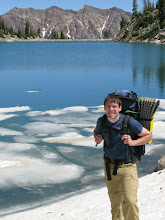Just over three years ago (has it really been that long?) I wrote
a piece mocking a commercial that claimed "It would only take a square of desert 96 miles wide covered in solar panels to produce all the electricity that the United States needs." As I wrote at the time,
That's roughly 5.9 million acres of desert, or just over 7 times the combined area of all 5 of Utah's National Parks. And that's the problem right there: It's lovely to imagine that the entire southwestern corner of the United States is wide open, just waiting to be covered with solar panels, but, as it turns out, good portions of it are already being used for things like National Parks and the city of Phoenix.
Indeed, solar and wind power development frequently threatens otherwise pristine wilderness. Such is the case with a
controversy that has erupted in California:
[April Sall's] small California group, the Wildlands Conservancy, wanted to preserve 600,000 acres of the Mojave. The group raised $45 million, bought the land and deeded it to the federal government.
The conservancy intended that the land be protected forever. Instead, 12 years after accepting the largest land gift in American history, the federal government is on the verge of opening 50,000 acres of that bequest to solar development.
Even worse, in Sall's view, the nation's largest environmental organizations are scarcely voicing opposition. Their silence leaves the conservancy and a smattering of other small environmental organizations nearly alone in opposing energy development across 33,000 square miles of desert land.
Power needs to come from somewhere, and it's almost unavoidable that some kind of wilderness will be destroyed along the way. Still, this provides a reminder that solar and wind power pose their own significant environmental problems.
